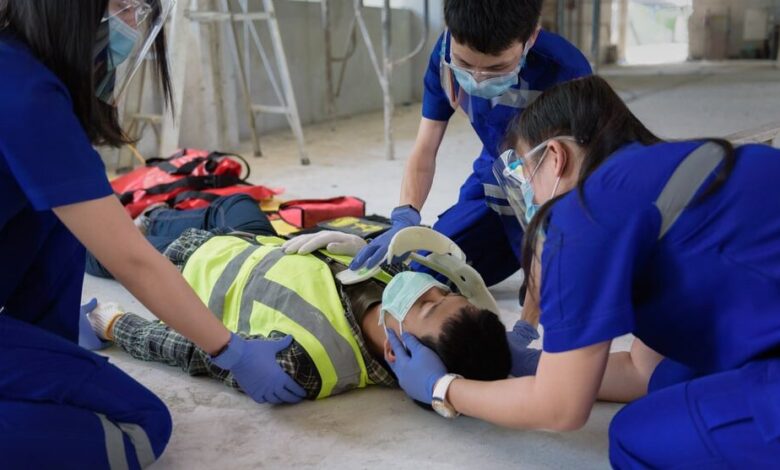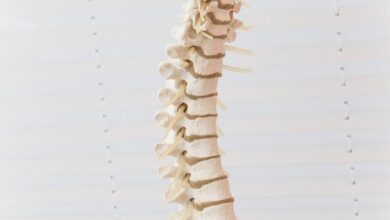Workplace First Aid Empowering Safety and Preparedness

Safety has rightfully claimed its spot at the forefront of priorities in the dynamic and ever-evolving world of workplaces. Imagine a bustling office, a construction site humming with activity, or a factory floor where production never stops. Amidst the constant motion, ensuring the well-being of every individual present remains an unchanging truth. This comprehensive guide serves as a compass to lead you through the essential journey of acquiring first aid skills for the workplace. It aims to reinforce workplace safety and empower you to be a beacon of assistance when it matters the most.
Think about a colleague experiencing a medical emergency, a fellow worker sustaining an injury, or a sudden health crisis striking. Possessing the knowledge and skills of first aid transforms you from a bystander to a potential lifesaver in those critical moments. It’s more than just knowing how to put a bandage on a wound; it’s about having the confidence to react swiftly and effectively in the face of adversity.
First aid skills are not just a checklist item or a mere formality; they are a commitment. By equipping yourself with the tools to make a genuine impact, you are committing to creating a haven of safety within your workplace. As workplaces grow more diverse and tasks become more intricate, the importance of first aid skills cannot be overstated. When the unexpected occurs, those trained in first aid can prevent further harm, minimise injuries, and even save lives with their quick thinking and precise actions.
By considering it as an investment, not only in terms of time and effort but also in the people around you, acquiring first aid skills can enhance your capabilities and contribute to a culture of preparedness and care. Being ready to handle emergencies sends a powerful message to colleagues and peers that safety is everyone’s responsibility.
This guide delves into the core facets of acquiring first aid skills to maintain a safe workplace. It covers a spectrum of topics, from understanding workplace first aid principles to mastering essential techniques that can make a genuine difference in various emergency scenarios. It also explores how to identify common workplace hazards, build a comprehensive first aid kit, and integrate first aid training into your workplace’s emergency response plan.
Whether you have years of experience or are a beginner in your profession, it doesn’t matter if you work in an office, factory, restaurant, or any other environment. The information provided in this guide will be beneficial to you. It will help create a safer, more secure workplace where everyone can contribute to positive change.
Understanding Workplace First Aid
The scope of workplace first aid extends beyond the application of a bandage. It encompasses diverse methods and understanding to aptly handle crises, which could potentially prevent fatalities in critical scenarios. When team members are equipped with first aid skills, they can respond promptly, resulting in reduced response time and a culture of safety where all individuals contribute to mitigating hazards.
Identifying Common Workplace Hazards
Recognising the potential hazards in your work environment before learning particular first aid methods is crucial. This includes identifying risks such as slippery floors and exposure to chemicals, which enables better preparation and a quicker response. Addressing these hazards is not only a regulatory requirement but also essential for protecting the safety of your team and ensuring they return home safely after every shift. Identifying workplace hazards can be a challenging task and one must receive proper first aid risk assessment training to learn how they can effectively address all of the hazards associated with their work.
Essential First Aid Skills for the Workplace
Mastering Basic Life Support Techniques
Possessing the ability to perform cardiopulmonary resuscitation (CPR) and use an automated external defibrillator (AED) is crucial. Knowing how to perform chest compressions proficiently and determine the appropriate time to use an AED can greatly enhance the likelihood of surviving a heart-related crisis.
Becoming Proficient in Wound Care and Bleeding Control
Cleaning and dressing wounds properly, in addition to applying direct pressure, can help minimise blood loss and prevent infections in accidents that cause cuts and bleeding. Additional techniques, such as elevating the injured area and correctly employing tourniquets, can also be used to save lives.
Managing Burns and Scalds
Burns resulting from exposure to chemicals, hot surfaces, or flames are common occurrences in numerous work settings. It is crucial to distinguish between the different types of burns and their level of severity to administer prompt and suitable initial treatment. Properly covering burns to prevent infection is imperative, and it is essential to acknowledge the importance of timely medical care.
Handling Fractures and Musculoskeletal Injuries
Fractures and musculoskeletal injuries are major hazards in industries that require physical labour. To avoid aggravating the damage, it is vital to use techniques like immobilisation and correct splinting. It is also crucial to comprehend safe ways of transporting an injured individual.
Reacting to Choking and Airway Obstruction
Knowing how to perform the Heimlich manoeuvre, also known as abdominal thrusts, is crucial in preventing a blocked airway from turning into a life-threatening emergency. Acting swiftly is essential, and mastering this technique can be the determining factor between saving a life or losing one.
Building a Workplace First Aid Kit
During emergencies, having the appropriate tools available can have a significant impact. A comprehensive first aid kit should include items such as adhesive bandages, sterile gauze, antiseptic wipes, scissors, gloves, and other essential supplies. It’s important to regularly check and restock the kit to ensure that all items are up-to-date and ready for use. Additionally, it’s crucial that all employees know the location of the first aid kit to ensure quick access when necessary.
First Aid Training and Certification
Having a first aid kit is highly valuable, but it is equally important to know how to use it effectively. Enrolling your employees in educational programmes like a first aid at work course provides extensive knowledge and practical experience. Look for accredited training programmes that cover various scenarios relevant to your workplace. Different levels of certification provide different skills that can be crucial in life-saving situations where time is of the essence.
Developing an Emergency Response Plan
One must keep in mind that first aid is only part of a comprehensive emergency response plan. It should be integrated into the overall strategy to ensure a coordinated and effective approach to emergencies. Assigning designated team members as first aid responders and outlining their duties and responsibilities helps achieve this. Regular practise drills and simulations help keep everyone prepared and ready to respond efficiently when the need arises.
Fostering a Culture of Safety and First Aid Awareness
Cultivating a culture of safety is crucial for the success of your first aid efforts. Educating your team on the significance of first aid skills in creating a safer workplace is important. Prompt reporting of hazards and injuries by employees can help resolve issues quickly. Additionally, acknowledging and rewarding safety-conscious behaviour can encourage a proactive approach towards well-being.
Conclusion
Ensuring workplace safety is not up for discussion; it is an absolute necessity. By obtaining vital first aid abilities, your workplace can move from being reactive to proactive. This enables your team to feel confident and ready during emergencies, cultivating a healthier and more secure work atmosphere. Ultimately, a well-prepared workplace benefits everyone involved by creating a safer environment.



